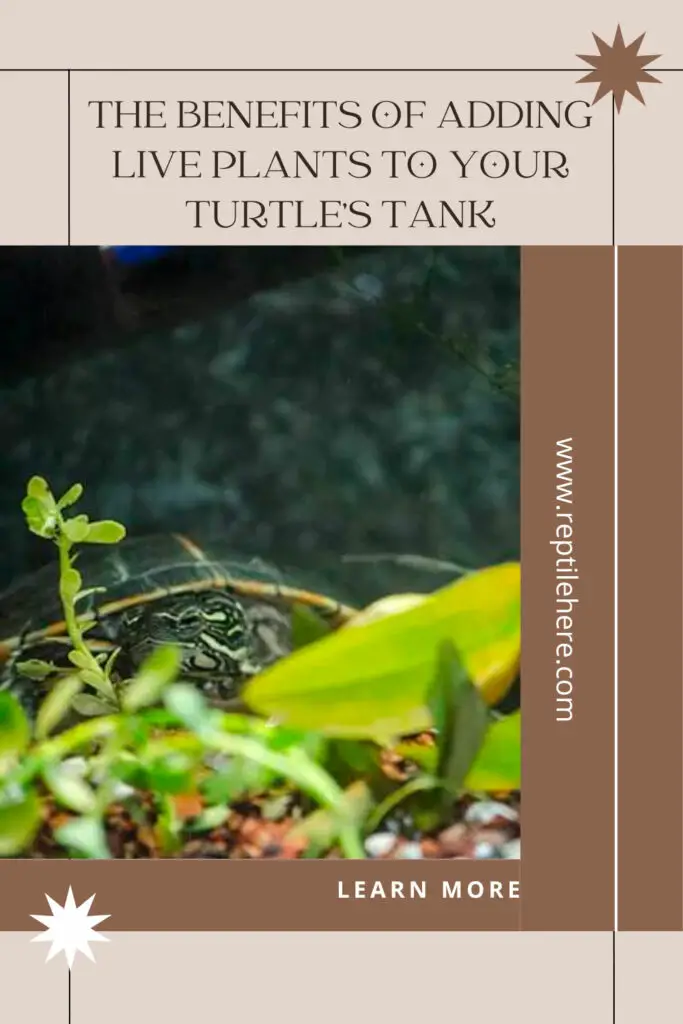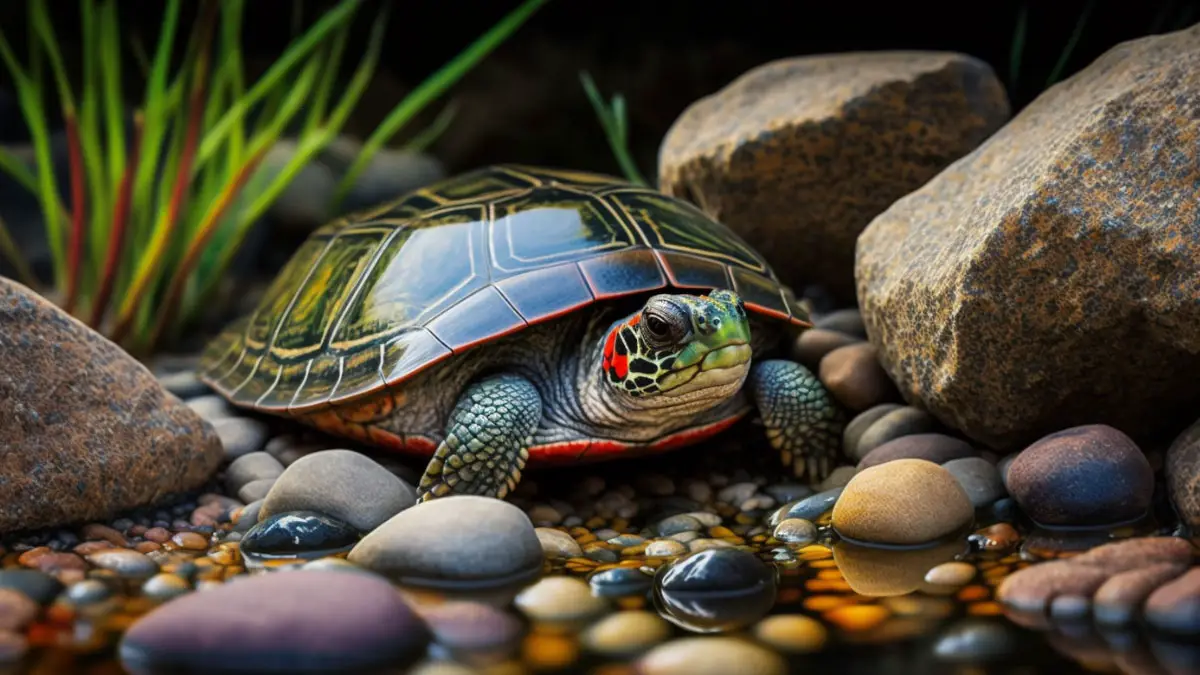The Benefits of Adding Live Plants to Your Turtle’s Tank
If you’re setting up a new turtle tank or upgrading your current one, you may be planning to add live plants to it. But before that, you may want to know how beneficial these plants are and whether they add any value to your turtle’s enclosure.
The benefits of adding live plants to your turtle’s tank include improving water quality, creating a natural environment for your turtle, controlling the growth of algae, and providing your turtle with hiding spots. Turtles also snack on aquatic plants to gain helpful nutrients in their body.
This article discusses more details about the benefits of adding live aquatic plants to your turtle’s enclosure. Additionally, we have discussed the most suitable plants to consider and tips on how to take care of them.
Benefits of live plants for turtle’s tank
Contents
Here are the key benefits that live aquatic plants introduce into your turtle tank:
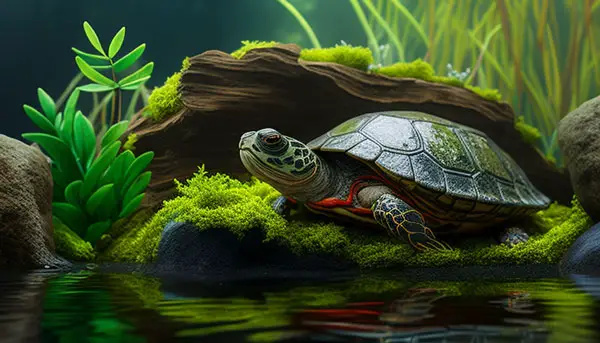
Improved water quality
One of the biggest benefits of having live aquatic plants in your turtle tank is that it helps improve the water quality.
These aquatic plants help filter ammonia, nitrites, and other inorganic compounds out of the water.
These are harmful compounds that if left to accumulate in the turtle tank can easily harm your turtle’s health.
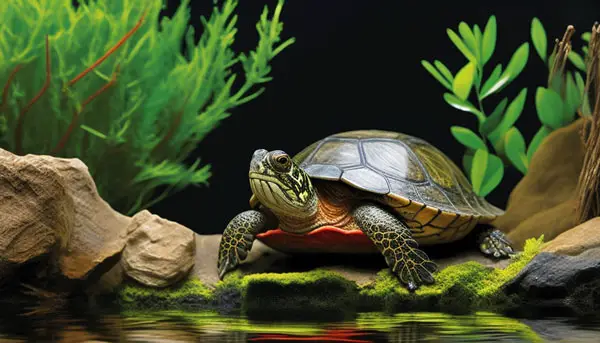
They can also make the environment uncomfortable and cause your turtle’s skin and eyes to get irritated.
Thankfully, plants can help maintain a healthy living environment for your turtles and you may not even need to clean more often.
More hiding spots
Sometimes your turtle needs to hide to get some alone time. For instance, it may want to go into hiding when it’s anxious or stressed. Or if you’re raising many turtles, they may also want to hide when there’s a fight inside the tank. A turtle may also want to hide to feel safe when it’s feeling threatened.
That said, aquatic plants, especially those with dense foliage, can help create perfect hiding spots for your turtles. If your turtle feels stressed, it may also need to get away a little bit and these plants will enable it to do just that.
A turtle’s natural environment
Having live plants in your aquarium can help mimic your turtle’s habitat in the wild—making it feel more natural to your pet turtle. Just add love plants to your turtle tank to provide your turtle with food and shelter.
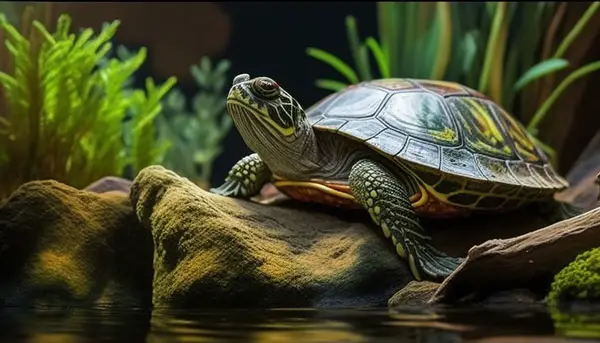
Aquatic plants are turtle’s snack
Most pet turtle species such as map turtles, red-eared sliders, box turtles, etc., are omnivores, meaning part of their diet should be made up of plant materials, up to 50 to 75%.
That said, your turtle is highly likely to snack on the plants you throw in its tank and this helps provide it with roughage as well as essential nutrients it needs to stay healthy.
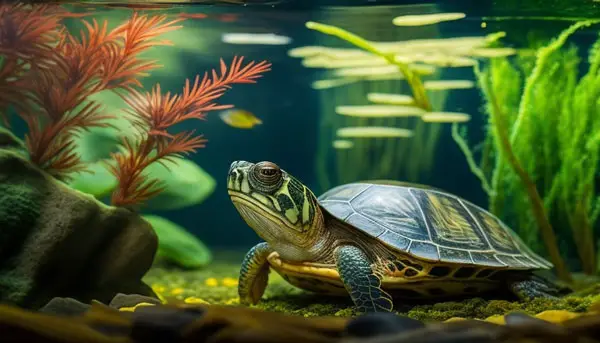
Just make sure the plants you put in your turtle’s tank are safe and not toxic for turtles to eat. (more details about the safest plants to use in your turtle tank coming up later).
Makes your tank more aesthetically appealing
If you’re looking for ideas for decorating your tank, then live plants are one such item to consider. These plants can make your turtle aquarium more visually appealing and lively.
They help oxygenate the water
Aquatic plants can also help oxygenate water in your turtle tank, which helps discourage the growth of anaerobic bacteria in the turtle tank.
Keep in mind that most of the harmful bacteria fall in the anaerobic category and won’t do well in an environment with plenty of oxygen.
This helps keep your turtle safe from diseases such as ear infections caused by those bad bacteria.
Besides, your pet turtle will be able to absorb more oxygen when breathing underwater.
Controls the growth of algae
Live plants will be competing for carbon dioxide with the algae in the water. As a result, the latter won’t thrive as it would if it were the only plant in the turtle tank.
As a result, the growth of algae will be kept under control and you may not have to worry about it overgrowing.
What types of plants are suitable for a turtle’s tank?
Now that we have discussed the major benefits of adding live plants to the water, you may be wondering what types of plants you should consider for your turtle’s enclosure.
Follow these tips when choosing aquatic plants for your turtle tank:
Start by ensuring the plant you use in your turtle tank is non-toxic and safe for your pet turtles in case it eats them.
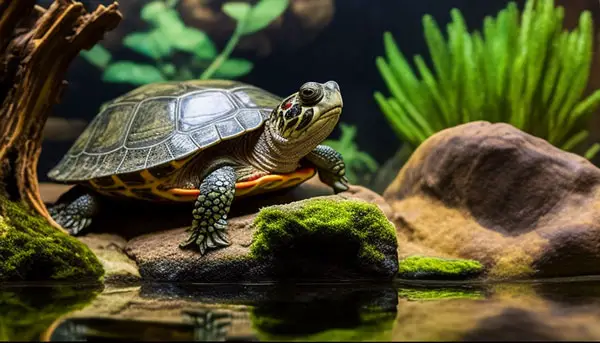
The safest plants to consider for your turtle tank include:
- Hornwort
- Moneywort
- Duckweed
- Anubias barteri
- Anacharis
- Java fern
- Java moss
- Water lettuce
- Amazon sword plant
- African water fern
- Frogbit
- Dwarf hair grass
- Water hyacinth.
And here are some of the poisonous plants to keep away from:
- Nightshade
- Ivy
- Milkweed
- Rhododendron leaves
- Caladium
- Tomato (both plants and leaves), etc.
Check this full list of poisonous plants to avoid for turtles and tortoises.
Get plants that are deep or tough-rooted to minimize the chances of your pet turtle uprooting them before they become fully grown
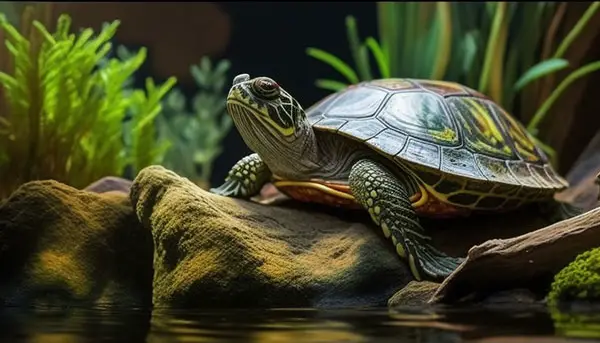
Choose plants that are highly nutritious for your pet turtles. Since your turtles are highly likely to munch on the plants, you want to ensure that at least they get helpful nutrients.
You should also look for plant species that can grow in low-light conditions in your turtle tank. Some plants, e.g. water hyacinth require plenty of lighting and hot temperatures to thrive and may not do well in your indoor turtle enclosure.
Some plants will also do better in an outdoor enclosure than in an indoor setup, so keep this in mind as well.
How to care for your turtle tank plants
After adding the plants to your turtle tank, you’ll need to take good care of them as they continue growing.
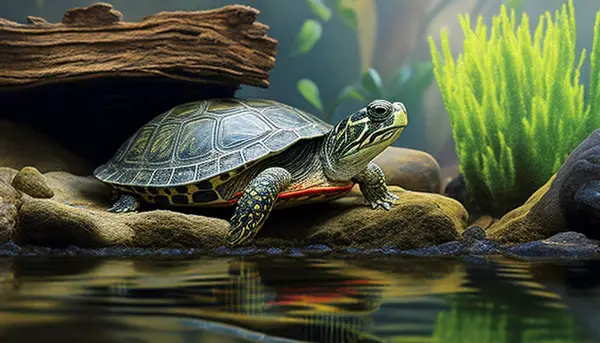
Below are some helpful tips to help you take good care of your turtle tank plants:
- Trim your plants regularly to keep them from overcrowding your turtle tank and at the same time encourage their growth.
- Ensure you keep the turtle tank water quality high. While plants help remove harmful compounds from water, they also require clean water for them to thrive.
- Ensure you line up the bottom of your turtle with a suitable substrate whether it’s sand, gravel, etc. Most aquatic plants require a substrate for proper growth.
- You’ll also need to ensure your plants enjoy maximum light exposure. Most of these plants will require about 10 to 12 hours of light to grow properly. Or better off, choose pants that thrive in low light conditions.
Final Verdict
Adding live aquatic plants to your turtle comes with many benefits to your turtle. They can help improve the overall water quality, create a natural and healthy environment for your pet turtles, control algae growth, increase oxygen in the water, create hiding spots, and even beautify your turtle tank.
However, you should ensure you choose plants that are safe for turtles as you will likely try to eat them. You’ll also need to ensure you take good care of your aquatic plants to enable them to thrive in the turtle tank. Follow the tips we’ve discussed in the above guide on how to take good care of your aquatic plants.
